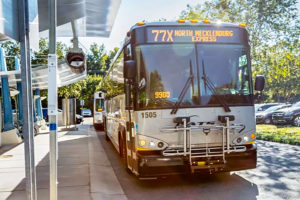 Public transport is cost-effective, convenient and generally quite safe, although it’s reasonable for passengers to know about the risks they face when hopping aboard any bus, especially in urban areas. Even if you’re a pedestrian, a cyclist or another road user, buses are a potential hazard to keep in mind.
Public transport is cost-effective, convenient and generally quite safe, although it’s reasonable for passengers to know about the risks they face when hopping aboard any bus, especially in urban areas. Even if you’re a pedestrian, a cyclist or another road user, buses are a potential hazard to keep in mind.
So what do the statistics tell us about accidents involving buses across America’s major cities, and how can you cope with being injured in a collision involving a bus?
Facts you need to know
The good news is that although fatal accidents involving heavy vehicles, including buses and trucks, still occur each year, they are 21 percent below the peak seen 20 years ago.
In 2019, there were a total of 127,000 incidents of injuries occurring as a result of bus or truck crashes, of which buses in city centers accounted for 12 percent.
Amazingly just 15 city buses, in a nation with millions of these vehicles on the road every day, were involved in fatal crashes in 2019.
So on the face of it, you can rest easy that the likelihood of actually being injured by a bus, whether as a passenger or as a third party in another vehicle or on foot, is incredibly slim. However, there are still thousands of people who find themselves in this situation each year, so what should you do next?
Consult an expert local personal injury law firm, e.g. in Washington D.C.
The best step to take as the victim of a bus-related injury is to get in touch with personal injury attorneys in the area local to where the incident took place, such as Chaikin, Sherman, Cammarata & Siegel, P.C. in Washington D.C.
Personal injury laws differ from state to state, and so you need the support of a lawyer who knows the rules and regulations of your region like the back of their hand.
Seek medical attention
Another obvious priority for anyone who’s been injured in a medical emergency, regardless of the cause, is to get attention and treatment from a trained professional.
Aside from making sure that you are safe and stable, and on the road to recovery, this part of the process is useful in terms of gathering evidence about your injury as soon as possible after the incident that caused it.
Such evidence can be instrumental further down the line when you are seeking compensation and any other reparations that you are legally entitled to.
It’s worth pointing out that compensation payouts after an accident in which you are injured can be significant, and will cover a variety of costs, including any potential medical and legal expenses that you incur, as well as reimbursing you for lost income, on top of emotional trauma you’ve suffered.
Because of all this, it’s well worth taking the step to seek justice, rather than steering clear of the legal route for fear that it will be more hassle than it is worth.
Don’t stop using busses
Finally, you shouldn’t just dismiss the entire concept of public transport based on one bad experience with a bus that you had yourself.
As the impacts of climate change are felt with increasing ferocity worldwide, and communities join forces to fight it, we can all do our bit to reduce our carbon footprints by riding the bus or taking the train rather than driving individual cars.
Better yet, buses are a congestion-fighting machine, since they mean that there are fewer vehicles on the road and thus less traffic to clog up city streets every day nationwide.


